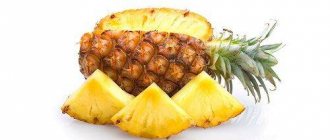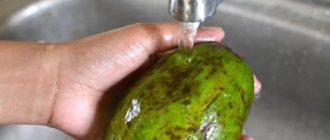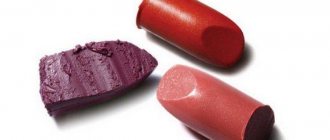Pineapple is a tasty and healthy product. It is often used to decorate a festive table and various dishes. If it comes to our house in canned form or candied fruit, then there are no questions about how to peel and cut this fruit. And if we come across fresh fruit, it would seem, take it and eat it.
It's not that simple, dear friends. To appreciate all the delights of this tropical fruit, you need to understand the peculiarities of selection, cutting and preparation for serving.
Video instruction
https://youtube.com/watch?v=9c75mLzXgGE
One of the most popular tropical fruits is pineapple. Its wonderful taste is difficult to compare with anything, but everyone has probably heard about its benefits. But many refuse to buy it for the reason that it looks exotic and it is not clear how to remove the skin. How to peel a pineapple without damaging the valuable pulp? There are several simple and quick ways to do this.
Fruit processing and preparation
To prevent cutting a pineapple from becoming a challenge, you need to learn the rules and skills:
- Before cutting the pineapple, it (and the leaves) are thoroughly washed under running water to remove midges, specks, and other dirt.
- For work, take a well-sharpened thin knife.
- The tail leaves should not be torn off: they are held on to, cleaning massive specimens.
- Having cut off the lower part of the fruit, check its stability so that it does not roll off the table or get injured if the knife slips.
- The peel is cut thinner: the layer underneath is the sweetest and most aromatic.
- The “eyes” are removed: these darkish, hard areas spoil the taste and make the fruit aesthetically unattractive. Use a small, sharp knife to avoid catching excess pulp.
- The core is cut off; it is inedible. Hard fibers stand out against the background of the pulp, so they are easy to identify and remove. “Thrifty” people, having tried this part of the fruit, pay with a swollen tongue, a feeling of bitterness and an astringent taste in the mouth. But you shouldn’t throw it away: it is a valuable seasoning for dishes that require cooking.
- Peelings are inedible in any form.
To enjoy the juicy, aromatic pulp, you cannot peel the pineapple in advance - only before serving.
Choose tasty and ripe fruit
Before peeling and serving, you must choose the right tropical fruit in the store. A tasty and high-quality fruit that will retain its shape after cutting should not be overripe. You can determine a good fruit by appearance, adhering to the following criteria:
- the peel is not pale, the structure is dense;
- there is no mold or rot;
- the pulp of the fruit is not crushed by finger pressure;
- the rosette of ripe fruit turns easily;
- the aroma should not be cloying, a rich sweet aroma indicates a violation of the outer shell;
- complete absence of odor indicates immaturity;
- absence of damage and dents (which are characteristic of the internal rotting process).
You should not buy fruit without a green tail. This indicates that it has been on the counter for a long time and may no longer be fresh.
Traditional way
Let's wash the fruit and put it on the board. Cut off the upper part with leaves and the lower stalk.
Place the fruit vertically. Now you need to trim the peel from the sides without taking many centimeters. Move from top to bottom. Don’t worry if there are still “eyes” of the pineapple on the fruit, your task is to cut off as little of the peel as possible.
By following the texture of the fruit, you will be able to preserve the pulp and enjoy the sweet taste. Removing the “eyes” is the next step. The characteristic brown dots are located on the same diagonal. Make V-shaped cuts along this line. You should end up with a whole stripe of brown dots.
The pineapple is ready, cut it into circles or slices - it all depends on personal preference. The core of the fruit is hard, but suitable for consumption; by the way, all the beneficial vitamins of pineapple are stored there: fiber, vitamin C, bromelain. If you don’t want to eat the core, you can cut it out, leaving the rings.
Squeezing out the pulp with a special knife
For special gourmets of this delicacy, a special slicer is perfect. A very necessary thing in the household. With its help, the pineapple is cut into perfect slices. The shape of the slicer resembles a plastic or metal corkscrew with sharp plates, specially designed for this type of fruit.
Slicers are mechanical and electrical, for household and industrial purposes. The process of cutting with a mechanical household device is quite simple and will not take more than two minutes:
- cut off the top with leaves from the pineapple, place the tropical fruit in a vertical position;
- insert the slicer into the core of the pineapple and screw it into the pulp according to the principle of a regular corkscrew;
- having reached the base, remove the slicer from the fruit.
You will end up with an empty bowl-shaped peel and perfectly cut flesh in the shape of circles.
Remove the core from the peel and you have an original container for fruit salad in pineapple!
Decorative basket for a festive feast
Another great option to surprise your guests is the way of serving an exotic fruit in a basket. Thanks to a good imagination, you can make a very original thing. To make a basket you need:
- Cut the pineapple into two equal parts.
- Cut out all the pulp, paying attention to the thickness of the resulting walls; they should not be too thin.
- Carefully cut cubes and triangles from the resulting pulp.
- Place the juicy pieces into pre-prepared baskets. If desired, you can add grapes or mint leaves.
The resulting baskets can be used for fruit salads made from other berry ingredients. Baskets with cut-out handles will look impressive.
Benefits and harms
Among the huge number of minerals, trace elements and vitamins, vitamin C, B and PP are distinguished. Eating this fruit can:
- strengthen the walls of blood vessels, it is also useful for cardiovascular diseases;
- stabilize the functioning of the intestines and digestive tract;
- speed up metabolism, recommended for overweight people;
- relieve inflammatory processes;
- restore bone tissue;
- contains iron and can therefore replace meat.
If you use this fruit incorrectly, you can get some problems:
- If cleaned incorrectly, skin irritation may occur;
- overeating leads to allergies;
- It is not recommended to eat for those who have gastritis, high stomach acidity or ulcers.
Cutting the fruit
The remaining leaves and pieces with eyes are sent to the trash bin, the board and knife are washed, are you ready to move on? We learned how to properly peel a pineapple and got sweet pulp - not yet cut.
Let's get creative - there are a lot of options for serving fruit. We selected the most popular and simple ones, tested them in practice and are ready to describe them to you. Let's go back to the kitchen!
In slices:
- Divide the fruit into four quarters;
- Now you need to quickly peel the pineapple from the inner hard core - cut it with a knife on both sides;
- Peel each quarter in sequence;
- Now cut the strip into slices of the desired width. Ready!
One of the most popular cutting methods is in circles.
Did you buy a jar of syrup? Have you noticed that there are rings floating inside (with a hole in the middle)? You can do exactly the same!
- Take the whole fruit;
- Cut it into circles of arbitrary thickness;
- Cut out the core with a knife, turning it in a circle;
- Or use an apple corer.
At the same time, it is better to serve children with rounds with a core - they will be able to hold the fruit by it without risking injury from a fork or toothpick/skewer.
You can peel the pineapple properly with a knife if you plan to serve the fruit whole. What if you want to eat a few pieces?
- We wash the fruit and cut off the leaves;
- Cut off several rings (with peel) with a knife;
- Carefully remove the peel and eyes with a knife, simply cutting;
- Cut out the core and cut as desired.
We also recommend: Where does macadamia nut grow and what does it look like?
Done, you are amazing! Then you can eat the rest of the fruit.
How to Serve Asian Style
We told you how to peel a pineapple - you don’t have to do this if you plan to serve the fruit in an Asian style:
- Remove the top with leaves and cut off the bottom (don't forget to wash);
- Cut into six or eight pieces - depending on size - using a knife to move vertically;
- Carefully cut the flesh into slices without touching the skin.
This is an ideal option for a very beautiful presentation - a real boat. However, the slices can be cut off from the “substrate” and placed on top.
The last method worth talking about is cutting into cubes. First, chop the rings, remove the core and start cutting into squares. You've obviously done this with other fruits or vegetables.
You've learned how to peel and cut a pineapple - experiment with different options. Now let's talk about what it is eaten with.
In the video you can clearly see how easy it is to peel the fruit:
How to clean properly
The indigenous population of the tropics, the birthplace of the fruit, taught Europeans how to properly peel a pineapple. Over the centuries, Asians have come up with several ways to peel a pineapple with a knife - intricate and simple. The basic process is simple:
- To carefully peel the fruit and get even slices, you will need a cutting board, ordinary but well-sharpened knives - large and small with a thin blade. Using a potato peeler is not recommended.
- The washed and dried pineapple is placed on a board, the bottom and top are cut off.
- Place the fruit on the cut surface and remove the skin with light movements.
- Cut the peel in a thin layer, in strips. Don't rush, trying to capture several "eyes" at once. Otherwise, a lot of pulp will go into cleaning.
- The result is a golden-spotted “barrel” or “stump”.
- Use a small knife to cut out the eyes. It is easy to distinguish them from the pulp: the spots are denser and darker.
- We cut the “stump” from top to bottom into four parts, removing the core from each.
- Finished large slices - quarters - material for further work. They are easy to cut into cubes, circles, and bars.
Not everyone likes the process, so people came up with the slicer. He is able to cut the fruit almost independently.
Five secrets for easy pineapple peeling
In order to learn how to properly peel a pineapple with a knife, consider the following cleaning option. Some hardware stores sell special devices: they both clean and cut fruit. However, this device is not at all necessary. The only thing we need is a thoroughly washed fruit and an ordinary wooden cutting board, as well as a sharp knife and a vegetable peeler.
And in order for a cleaned specimen to retain its shape, it is important to clean it properly. Before peeling a pineapple with a knife, it should be noted that peeling involves not only peeling the fruit, but also removing its inedible middle, which should not be eaten, as it has a rather rough structure and an unpleasant aftertaste.
Method No. 1
Cut off the crown of the pineapple. Using a small knife, cut the top into segments to remove it. By the way, you can place the crown in water and grow a new pineapple from it.
Roll the fruit on a cutting board, pressing it slightly to separate small segments from the central part. After this, press on each one individually to separate the piece along with the peel. If the pineapple is not very ripe, you can use a knife to cut segments from the peel side to make the job easier.
Method No. 2
Cut off the crown and top of the pineapple. Cut off the peel. There will be small eyes in the pulp. Remove the eyes with a knife in a cross motion.
Cut the fully peeled pineapple into quarters and remove the hard core. After this, divide the pineapple into pieces of the desired size.
Method No. 3
Cut off the crown and top of the fruit. Cut the peel by moving the knife a little deeper than in method No. 2, immediately cutting off the eyes.
When the pineapple is peeled, divide it into quarters, remove the core from each and cut into pieces of the desired size. This method will be less energy intensive than the second, but you will lose more pulp.
What you need to peel a pineapple
When choosing this fruit for your holiday table, you can take the easy route and buy the canned version, but nothing beats the sweet aroma of freshly cut fruit. That is why it is worth spending a little more time and choosing a suitable product that will decorate the table.
In order not to purchase an unripe or spoiled fruit, which is unlikely to please you with its juicy amber-yellow pulp, it is important to know a few rules that indicate the ripeness of the fruit:
- hard skin, slightly springy when pressed;
- heaviness of the fruit;
- absence of soft areas and dark spots;
- You can pull out one or more feathers from a pineapple without much effort;
- If you bring the fruit to your nose, you can feel a pronounced subtle and sweet aroma.
When wondering how to properly peel a pineapple, it is worth remembering that for quality work you will need convenient tools:
- 2 sharpened knives (the thinner the layer of peel, the more vitamins are retained on the surface of the fruit);
- board for cutting food (it can be either wooden or plastic);
- knife for peeling potatoes.
Bromelain, which is found on the border between the peel and the pulp, is very beneficial for the body due to its ability to break down fats. However, it also has an unpleasant side; its contact with the mucous membrane can cause a burning sensation and irritation. That is why to peel the fruit and cut it into pieces, you need to use 2 different knives.
Selection of ripe pineapple
First of all, you need to buy a high-quality and mature product. “Green” pineapple will be too hard, tart, or may even taste bitter. It does not yet contain all the valuable elements that accumulate in a ripe fruit. A good pineapple will exude a subtle characteristic aroma, will spring a little when squeezed in the palms, and its crown will retain its greenness and freshness.
- Overripe pineapples are usually softer. They may ooze, and their leaves dry out and turn yellow. This pineapple will be as sweet as possible. But there's a catch. For safety during transportation, fruits are often treated with chemical compounds. By reacting with them, the fruit may begin to ferment. Therefore, choose fresh young fruits.
- The size of pineapples varies depending on the variety, so miniature fruits are not necessarily green, but can be quite sweet, juicy and aromatic. Typically, larger pineapples have a bright yellow tint inside, while dwarf varieties have a pale yellow, sweet “filling.”
Be sure to inspect the peel to ensure it is clean, dry, and free of damage and signs of mold. There should be no soft spots or “dips” under the crust. When tapped, the ripe fruit produces a dull sound, and the weight of a juicy pineapple will always be impressive.
Benefits and harms
Among the huge number of minerals, trace elements and vitamins, vitamin C, B and PP are distinguished. Eating this fruit can:
- strengthen the walls of blood vessels, it is also useful for cardiovascular diseases;
- stabilize the functioning of the intestines and digestive tract;
- speed up metabolism, recommended for overweight people;
- relieve inflammatory processes;
- restore bone tissue;
- contains iron and can therefore replace meat.
Popular articles Do-it-yourself fruit bouquet - step-by-step photos for beginners
If you use this fruit incorrectly, you can get some problems:
- If cleaned incorrectly, skin irritation may occur;
- overeating leads to allergies;
- It is not recommended to eat for those who have gastritis, high stomach acidity or ulcers.
Benefits and harms
Among the huge number of minerals, trace elements and vitamins, vitamin C, B and PP are distinguished. Eating this fruit can:
- strengthen the walls of blood vessels, it is also useful for cardiovascular diseases;
- stabilize the functioning of the intestines and digestive tract;
- speed up metabolism, recommended for overweight people;
- relieve inflammatory processes;
- restore bone tissue;
- contains iron and can therefore replace meat.
If you use this fruit incorrectly, you can get some problems:
- If cleaned incorrectly, skin irritation may occur;
- overeating leads to allergies;
- It is not recommended to eat for those who have gastritis, high stomach acidity or ulcers.
Fruit box
If you want to amaze your guests not only with the fruit, but also with its presentation, create pineapple “boxes”:
Since the skin will become a “dish,” wash the pineapple and leaves especially thoroughly. The unpeeled fruit must be cut in half - lengthwise or crosswise. The pulp is cut out of each part: carefully so as not to damage the bottom. Make rectangular cuts almost to the peel
To ensure that the contours are even after removing the pulp, the knife is stuck into the side of the fruit and led to the “bottom”. Remove the core from all parts. The extracted pulp must be cut into cubes (up to a centimeter along the edge), placed in a “basket” peel.
Pieces of pineapple, assorted exotic fruits and berries, desserts with ice cream or syrup are placed there.
It is not necessary to leave leaves if they are not particularly aesthetically pleasing. The main thing is to cut carefully, without touching the top of the fruit. An original solution is to build a personal basket with a treat for each guest.
Cutting a pineapple this way takes time and skill. But even sophisticated aesthetes will appreciate the result.
Removing the pulp with a special knife
Processing exotic fruit is not for everyone. To simplify the process, a special device has been invented. The English-speaking community calls it pineapple slicer (pronounced "pine-apple slicer").
The device is a corkscrew design with knife plates. Operating procedure:
- Cut off the top and bottom of the thoroughly washed fruit.
- Place the slicer vertically on the cut and begin to rotate it like a corkscrew.
- When the knife reaches the bottom, pull out the device.
All that remains is to cut the pineapple. This is a pleasure: the spiral-shaped pulp is easily and quickly converted into even slices. The remaining “glass”, after removing the core, can be easily adapted into a cocktail container. The device is sold in hardware supermarkets or online.
A true find for fans of the exotic fruit, however, to master it, you will need time and several “experimental” fruits.
But if life without exotic fruits seems boring, it’s worth taking a master class and getting a home slicer.
You can cut a pineapple perfectly, but your efforts will go down the drain if the specimen turns out to be “defective.” When choosing it, analyze the color: green at the top, yellow at the bottom. The fruits should be elastic, but not soft, with a strong green tuft. And it smells nice.
Step-by-step descriptions with photos
We've rounded up some simple but globally popular options for peeling and slicing pineapple. Try to master them, and soon this healthy and tasty fruit will take its rightful place on your table.
This is how to properly peel a pineapple
In fact, it is quite possible to cope with peeling a pineapple if you follow the generally accepted scheme for this, which must have been proven by centuries of experience of various tropical peoples, and do not try to twirl it in your hands and cut off the tough skin with a potato peeler.
Progress:
- We take a board, a large carving knife (aka “chef”) and a small knife, usually used for cutting eyes out of potatoes. Place the pineapple on a board and remove the bottom and leaves along with the top cap of the fruit.
- We put the fruit on the cut and cut off the tough skin, trying to “catch” as little pulp as possible.
- The result was a yellow “barrel” with dark spots. Using a small and sharp knife, we methodically remove these dark seals.
- We cut the “barrel” lengthwise into four parts, after which we remove the dense and fibrous core.
- We cut the fruit quarters into cubes or slices, depending on their further use.
You can also clean it beautifully: spiral patterns
- The beginning is the same as for the “barrel”: we place it on the board, cut off the bottom and the cap with leaves.
- We cut the pineapple and peel it.
- We lay it on its side and cut out the “eyes” diagonally to end up with a solid line-spiral.
- We divide the “little jar” into four parts.
- We remove the lighter and harder core.
- Divide the quarters in half.
- We cut the resulting blanks at our discretion, for example, into small pieces.
Video: master class on cutting pineapple
Women's method: just cut into rings or circles
An extremely simple method that does not require skill or much strength. It will be especially good when you need to quickly chop pineapple for a salad or stir-fry.
Procedure:
- Cut off the bottom of the pineapple.
- We cut the circles without first cleaning the fruit.
- Remove the skin from each circle in a thick layer, making sure that the dark spots remain in the peelings. If you want to preserve the pulp as much as possible, peel the peel in a thin layer and cut out the seals with a knife with a sharp end or a special knife for peeling potatoes.
- Cut out the tree-like core into a circle. Or we leave it and inform guests that they only need to hold a piece for it.
- If the fruit is served to children, then it is better not to cut it too finely and it is also better not to touch the core. Just cut the mugs into two parts: children will eat the slices with their hands, holding onto the hard and non-slip center.
Video: experiment on high-speed cutting of pineapple
Boats for the festive table
One thing can be said about this method of peeling and cutting pineapple: “First of all, it’s beautiful...”.
Pineapple “boats” are one of the most beautiful ways to cut and serve
- Cut the unpeeled pineapple lengthwise into four pieces.
- Remove the hard core from each part.
- Separate the pulp from the skin in one piece, avoiding dark seals.
- Cut into slices, 1 cm thick. Slightly move the pieces in a checkerboard pattern. The result is elegant boats that will rightfully decorate and refresh the festive table.
Beautiful spiral patterns
Pineapple can be not only beautifully cut. Gourmets have learned from the Thais how to peel a pineapple at home so that it is pleasing to the eye. They get rid of “eyes” aesthetically by cutting them off in a spiral. To ensure that the procedure is successful and there is a minimum of cleaning, the knife is chosen to be sharp and thin. Procedure:
The peel is cut thinner, without touching the “eyes”. The top is left: the fruit is held by it during work.
The “eyes” are removed with a knife, holding the pineapple by the tops and slowly turning it.
The ideal is a continuous groove-spiral with walls forming an angle. This can be done by professionals. A lightweight solution: cut grooves between three or four adjacent “eyes” and gradually connect them with a solid line.
Remove leaves and bottom of the fruit.
It turns out a whole patterned pineapple barrel. Serving options:
- cut the “barrel” horizontally into slices-washers; divide them into quarters, assemble them into their original shape, taking into account the pattern;
- cut the fruit vertically into slices with a side-relief.
Regardless of how you cut pineapples, this method removes the core.
How to beautifully serve pineapple on the table
Serving a holiday table with pineapple is a whole art; this fruit gives a lot of ideas for beautiful cutting; its pulp can be served either alone or in combination with other fruits.
These options for serving pineapple at home look very nice:
Rings
The most famous method is how pineapple is cut for subsequent preservation in jars. It's easy to make a cut like this:
- peel the skin;
- remove the top and bottom of the fruit;
- place the pineapple sideways on a cutting board and cut into circles of equal size (their diameter should not exceed 1 cm, otherwise they will look ugly and will be very inconvenient to eat);
- now you need to remove the middle;
- Finally, you need to remove the peel from all the circles.
Popular articles Fawn
If the pineapple is large in circumference, you can make half rings from the rings. You can serve the fruit in this cut either independently or in combination with other fruits. In addition, sliced pineapples can be used to cook meat in the oven.
Southeastern option
- There is no need to peel the fruit, only its bottom is cut off;
- Using a sharp knife, you need to cut the pineapple into four equal parts, in the shape of a boat;
- now remove the strong core, which is rarely eaten;
- You can make small cuts in the pulp across the peel, this will make it easier to eat;
- a very large specimen can be cut not into 4, but into 8 boats.
Canapes
A very interesting option for serving pineapple, which involves combining it with other products. This method of table setting will definitely please all guests:
- the peeled fruit should be cut into small cubes;
- prepare special skewers for canapés;
- separately cut several types of cheeses, ham or other types of fruit;
- you can alternate pineapple and cheeses, wrapping this structure with a thin slice of ham on top;
- The canapes with pineapple and olives, which need to be strung one after another on a skewer, are interesting in taste.
Basket full of pineapples
This cutting is an excellent solution for decorating a sweet table, allowing you not only to serve the fruit beautifully, but also to attract everyone’s attention:
- there is no need to peel the fruit, just wash it well;
- cut the fruit into two equal parts;
- using a sharp knife, you need to cut out the entire middle in one layer;
- cut the pulp into cubes of the same size;
- beautifully arrange the cubes in a basket from the top of the pineapple; they can be diluted with grapes or decorated with mint sprigs.
Spiral pattern
This option is quite simple to implement:
- wash the fruit;
- cut off the top with foliage and the base;
- carefully remove all the skin, placing the fruit vertically on the board;
- when cutting the eyes, you need to move not from one to another, but move the knife in a spiral;
- remove the core;
- the fruit can be cut into circles and put them together, thus serving on the table;
- you can make a real decoration from washers folded in a checkerboard pattern;
- the resulting fruit has a very attractive appearance and will definitely decorate the holiday table.
It is worth noting that pineapple is no longer exotic for our tables; its fruits decorate not only New Year’s, but also other holiday tables. Careful peeling, beautiful slicing and serving - all this can be done with your own hands, without much effort, if you apply a little ingenuity and diligence.
Serve exotic fruit beautifully
Agree, juicy, aromatic pineapple deserves a special serving. The bright yellow flesh, beautifully sliced, can be the highlight of a holiday table setting. Let's take a closer look at how to beautifully serve peeled pineapple to the table.
Rings.
The simplest and most well-known cutting. It’s easy to do it yourself, for this:
- clean the scales;
- cut off the top and bottom caps;
- Place the fruit sideways on a cutting board and try to carefully cut circles of equal size;
- remove the core.
The thickness of the piece should not exceed 1 cm. If the pieces are larger, cut them into halves.
South-eastern version of slicing.
For everything to work out, you need to:
- cut off the bottom of the unpeeled fruit;
- Using a very sharp knife, cut it into four pieces (boats);
- cut out the inedible part of the center;
- Make small cuts in the flesh.
It is better to cut very large fruits into eight parts. This will make it more convenient to eat.
Canapé cutting.
By combining the sweet center of a pineapple with other products, you will not only diversify your table, but also add a brighter color to your gray table setting. It’s easy to form canapes:
- the peeled pulp is cut into neat, equal-sized cubes;
- pieces of aromatic center, olives and cheese are alternately threaded onto special skewers;
- Place the formed canapés on a flat dish.
Basket of pineapples.
An ideal solution for the dessert table. Anyone can do it:
- wash the fruit well under running water;
- cut it into two equal parts;
- Using a sharp knife, cut out the delicious core (only the thin walls of the basket should remain);
- The pulp is cut into cubes and, alternating it with grapes, bananas, and strawberries, is placed in a prepared basket.
Spiral cutting.
The beautiful, ornate pattern is easy to make:
- cut off the top and base;
- carefully remove the skin in a thin layer;
- cut out the core;
- On the outside, spiral-shaped shallow notches are cut with a sharp knife.
When cutting off the skin and eyes, the knife must be guided in a spiral, and not along vertical lines.
By carefully studying the easy-to-use methods of peeling pineapple, you can more often delight yourself and your loved ones with this aromatic, sweet and, most importantly, healthy fresh fruit.
Several ways to gently clean without much effort
The dense, scaly skin with hard eyes is difficult to peel by hand (or rather, it is not peelable at all). You can simplify and speed up the task of preparing to serve pineapple by putting into practice some methods:
Vertical trimming. This is a rather troublesome method, but it is the only one that allows you to get even pieces with a minimum of waste. Armed with a well-sharpened knife, we first cut off the grassy “tuft” and the lower part. Try not to grab the juicy center more than 2 cm on each side. As a result, you will get a stable barrel, which, placed on a cutting board, is cut off from the hard skin and eyes. To prevent the board from slipping, you can lay a small towel under it. The peel with eyes is cut into very thin strips using precise vertical movements.
Squeeze out the tasty center. Very quickly (but, unfortunately, with a lot of waste) you can peel the fruit using this method. Everything is very simple: armed with a long, well-sharpened knife, cut off the base. With a deft movement, the blade is inserted into the juicy center, as close as possible to the shell. By turning the tip in a circle, the delicious center is squeezed out onto the plate. Practice has shown that it will take only two minutes of free time to cut and serve the juicy, aromatic core using this method.
Selective cleaning. The delicious center that is extracted is not always eaten immediately. If you need a small amount to prepare a salad, you should not peel it all. After all, after the skin is peeled off, it loses its beneficial properties. You can preserve the product by peeling it slice by slice. So the fruit is washed under running water, and then the required number of rings are cut off along with the peel. Before serving, they are peeled from the hard shell and tasteless core, and the remainder is placed in the refrigerator, where it can be stored for several days.
- Oriental cleaning. Carefully, with a minimum of waste, you can extract the edible part using the method of the inhabitants of eastern countries. To begin, remove the green top and stem. The rough shell is not cut off; it is used as a decorative substrate. Having cut the fruit into eight lobes, it is cut into thin slices (as is done with melon), without bringing the knife to the coarsened shell. If you unfold the slices in a checkerboard pattern and place them on a beautiful plate, such a dessert can become a decoration for the holiday table.
- Using a slicer. Don't skimp and buy yourself a special cleaning device - a slicer. This small knife, much like a corkscrew with sharp blades, will clean the rough outer and the tasteless center in a matter of seconds.
A few secrets on how to core a fresh pineapple
The appearance of the dish when served depends on how carefully the core is cut out. There are several secrets on how to do this as quickly and efficiently as possible. Let's look at them in more detail:
- You can remove the stem without disturbing the integrity of its peel. This can be done using a very sharp knife with a long, narrow blade or a special cleaning machine. After the core is removed, the aromatic pulp is cut into thin slices and served.
- If you don’t have a thin knife and you’ve only seen the cleaning machine on the Internet, it doesn’t matter. You can remove the core by cutting the fruit into rings and using a small knife to remove everything unnecessary.
- When pineapple is used as an ingredient for pizza or salad, the process of removing the core can be simplified as much as possible. To do this, the fruit is cut into four slices and the stem is cut off with a sharp knife. Next, it is cut into arbitrary pieces.
Ways to quickly peel pineapple
Pineapple has a rather dense peel structure, which is unlikely to be peeled with bare hands. However, there are several effective methods that can greatly simplify this task.
- Vertical trimming: a fairly economical method that allows you to get even and beautiful rings as a result:
- remove the foliage from the base of the fruit;
- cut off the bottom and top parts of the pineapple, about 2-3 cm, no more;
- place the pineapple vertically on the board, positioning it so that it is motionless;
- moving from top to bottom, you need to peel off the peel using a knife with a thin sharp blade;
- it is important to act carefully so as not to injure your hands or damage the pulp;
- after this you need to cut out the black eyes and remove the remaining peel from the surface of the fruit.
- Extracting the pulp: this method is suitable if you need to quickly extract the pulp, regardless of some loss of its quantity:
- Using a long knife, cut off the base of the fruit;
- push the blade inside the fruit so that it is located near the peel;
- Using circular movements, carefully separate the peel from the pulp from the inside;
- as soon as the pulp separates, it needs to be pushed out;
- Now you can remove the eyes.
- The Eastern method: allows you not only to peel the pineapple, but also to immediately prepare it for a beautiful presentation:
- first you need to thoroughly wash the fruit, removing all contaminants;
- remove the green leaves, stem and top from the pineapple;
- using a knife, divide the fruit into 4 equal parts, cutting it in half, then in half again;
- Using a very thin knife, you need to separate the pulp from each quarter;
- Now it’s enough to cut the pineapple into slices and place them in a checkerboard pattern.
- Peeling part of the fruit: this is the most common method, it is assumed that the whole fruit will not be eaten and a certain part of it is peeled. Such a fruit will not spoil ahead of time, because without the peel this process is greatly accelerated:
- cut 2-3 rings from an unpeeled pineapple;
- Using a sharp knife, carefully cut the peel off the rings;
- divide the peeled rings into slices and remove the core from them;
- It is better to put the remaining product in the refrigerator, after covering the cut with cling film (this way it can be stored from 2 to 7 days).
- Using a special knife: a so-called slicer, specially designed for peeling and cutting fruits of this type. It is a corkscrew-shaped knife with sharp plates on it:
- first rinse the pineapple, thoroughly brushing it to remove not only debris, but also bugs;
- blot with a towel;
- cut off the top part on which the leaves grow;
- place the knife in the middle of the cut and screw it into the pulp, in the same way as when working with an ordinary corkscrew;
- Having reached the bottom of the fruit, you need to take the slicer out;
- The pineapple will break down into spiral-shaped pieces that can be sliced.
Peeling a pineapple with a knife
If you have nothing at hand except a knife, then you can remove the inedible top layer of the pineapple with its help. But first you need to thoroughly rinse the fruit, removing all contaminants from the skin, after which you can begin the process. The following algorithm of actions will help you do everything correctly.
- First, the top is removed. The location of the cut is the base of the last leaf.
- After this, the fruit is cut into two equal parts in the middle.
- By making small cuts between the flesh and the skin, you can easily separate one from the other. This must be done from top to bottom, gradually moving in a circle and peeling the fruit.
- First, the skin is removed from one part, then from the other.
This is the easiest way to peel a pineapple to obtain pulp that can be cut lengthwise, into slices or into cubes. To work, you should take a large knife, and as sharp as possible, then you won’t need to put in too much effort.
Storage rules
In order for pineapple not to lose its taste, you need to be able to not only choose it correctly, but also choose the right storage conditions:
- The fruit should be stored at room temperature, approximately 15-18 degrees.
- You should not keep it in the refrigerator, as it can lose its aroma in it.
- It is not advisable to move it to a room where there will be a sharp change in temperature.
- The best storage container is a container with special holes.
- Pineapple can maintain its freshness for 12-16 days.
- It can absorb odors, so it should be kept away from foods with strong odors.
- Fruits should not be left in a sunny place.
- Stores sell a special knife that can be used to easily pull out the middle.
- It is not recommended to eat this fruit after eating meat.
Popular articles Decorative bottle “Memories of the Sea”
Phenomenal solution
However, do not despair and completely abandon this fruit. Recently, a video appeared on the Internet in which a person was able to pull out perfect large pieces of pineapple incredibly easily and without removing the peel.
It's no surprise that the video went viral almost instantly. Many people, having watched it on social networks, left comments for a long time about why they could not understand such a simple life hack before.
How to properly remove the core from a pineapple
Removing the core is an important process because it affects the amount of pulp that will result. They do this in several ways.
The first option is to remove the hard middle without disturbing the integrity of the peel. It’s easier to do this with a special pineapple cutting knife, but not everyone has such a tool in the kitchen, so it’s enough to pick up a long and sharp kitchen knife.
The next option is to cut the fruit into discs and remove the middle from each one separately. If you only need to get the pulp (salad, canapés, baskets), you can follow the simplest path: cut the fruit into 4 parts and cut out the middle from the inside.
Useful properties of pineapple
Pineapple is not only a very tasty delicacy, but also a storehouse of useful vitamins and microelements. It contains sucrose, iron, copper, calcium, zinc and iodine, vitamins A, B, C, ascorbic and citric acid. It is recommended to be used for problems with the gastrointestinal tract, thrombosis, edema, obesity, etc.
86% of pineapple pulp is water. It is a low-calorie food (100 g of product contains 48 kcal). The potassium salt contained in the fruit improves the body's metabolism and removes excess fluid. One hundred grams of this delicious dish contains the daily requirement of vitamin C and 75% of the norm of manganese to strengthen bones and connective tissues.
When moving through air and water, a glass of pineapple juice will help prevent nausea. Pineapples are often used for cosmetic purposes.
Health benefits and harms
Pineapple is a unique product. It contains organic acids that stimulate the digestion process. The product reduces blood viscosity.
Pineapple contains the substance bromelain, which prevents the deposition of triglycerides. You need to be careful: the acids contained in the fruit negatively affect the condition of tooth enamel.
During the process of peeling and cutting the pineapple, the core is discarded. It is considered to be rough and spoil the taste of the product. However, those who want to lose weight should focus on this part. The core also contains the substance bromelain (and even in greater quantities than the pulp itself), which helps fight excess weight. Banana diet.
How to choose a pineapple
There are a large number of varieties of pineapple, however, not all of them can be consumed raw. Some species are specially grown for preservation and for obtaining fiber from the leaves. Therefore, the main thing to do before purchasing is to ask the seller or consultant about the variety of this fruit.
In order to choose a ripe fruit, pay attention to its appearance, weight, sound, smell
- Consideration of external signs - there should be no defects on the skin. Ripe fruit will have a red-yellow, brownish, yellow color. The peel should be elastic and the bottom should be dry.
- Leaves - they should not have torn, dirty leaves on which there is mold or plaque, but strong, slightly dried out and dark green. To check for ripeness, you can unscrew the leaf; if this can be done without effort, then the fruit is ripe.
- Weight - the heaviness of the fruit, of course, will depend on the variety. It is advisable to choose pineapples weighing from 2 to 6 kilograms.
- Sound - this method is similar to choosing a watermelon. The pineapple can also make different sounds depending on how ripe it is. When ripe, it has a full, dull sound when you tap it with your palm.
- Feeling - when you press on the peel with your finger, the fruit should be soft and after a while return to its shape.
- Smell – a good fruit will have a pleasant, delicate, unobtrusive, sweet smell.
- Pulp - of course, it is unlikely that anyone in a supermarket will allow you to cut a fruit to look at its inside, but at home, when you cut it, you can determine whether the fruit is ripe or not. This will be indicated by its golden, yellowish tint. It will taste sweet with a slight sourness.
- Cost - usually the price of these fruits is not greatly reduced due to the fact that they are delivered from other countries. Inflated prices mean that the fruit was picked and imported only recently.
To buy a good, juicy fruit, you need to understand what signs may indicate its unsuitability:
- asymmetrical in shape;
- with various defects on the peel;
- too big and too small;
- with damaged, yellowed leaves;
- very hard;
- the pulp is pale yellow;
- the sound will be unexpressed or too loud;
- with a bottom that is soft or wet;
- a fruit that is large in size but light;
- with an unpleasant, pungent, rotten aroma or if it is absent;
- if the price is too low.
Choose a ripe and juicy pineapple
Before you eat a delicious fruit, you need to choose it correctly. There are several simple rules for choosing pineapples, following which you will certainly be satisfied with your purchase. Let's take a closer look at what you should pay attention to first:
- the leaves at the top should be a rich green color, without yellowness or spots. The leaves of a ripe fruit are easily torn off by hand, without unnecessary effort;
- do not buy these tropical fruits without the top - most likely, this indicates the beginning of rotting of the plant;
- an overly tight tip indicates unripe fruit;
- the peel of a ripe fruit has a yellow-green color, a uniform brown tint of the scales indicates the overripeness of the tasty fruit;
- To the touch, ripe pineapples have an elastic shell that restores its natural shape when lightly pressed with a finger. Increased hardness or softness of the shell indicates an unripe or overripe state;
- any visible deformations that occur during transportation or storage may make this product unsuitable for consumption; if there is visible damage, you should not risk your health; the product may be damaged;
- pay attention to the aroma. It should be soft, appetizing, reminiscent of a melon. The smell should under no circumstances be pungent or offensive.
How to cut the core
Coring is a fairly important step when peeling a pineapple. After all, its appearance when served will depend on how competently and accurately it is removed. This can be done in several ways:
- Cut the fruit into rings, remove the peel, and then cut out the middle of each piece.
- If you do not want to disturb the very shape of the pineapple, then remove its insides using a thin, sharp knife and cut into pieces. This option is quite complicated and requires a lot of effort, but the result will be worth it.
- If you need the fruit for a salad or for pizza, then to quickly remove the pulp, cut it vertically and simply remove the middle.
Tools for cutting pineapples
If you rarely buy pineapples, then ordinary knives will suffice for cutting. But in the case when these fruits are included in your diet on a regular basis, it is worth acquiring special tools. They will make your work easier and allow you to cut pineapples quickly and beautifully.
for extracting pulp :
- the first one simply helps to separate the pulp from the shell;
- the second additionally cuts the fruit into rings - convenient.
These devices are good because they keep the shell of the fruit intact, allowing it to be used in the future for serving.
By the way! If you want to save the sultan, cut out the flesh from the bottom.
process pineapple beautifully :
- peeling knife (by the way, it can be used as a regular vegetable peeler for other vegetables and fruits);
- a knife for spirally cutting out eyes with a solid tape (the eyes of a pineapple are arranged in a spiral, so they can be easily removed with a solid tape from bottom to top);
- tweezers for removing eyes (they help to easily remove eyes from the pulp, the peeled fruit in this case takes on an original appearance with holes reminiscent of a honeycomb).
If you do not have such tools, all this can be done with two knives - large and small. The first one is used for cleaning, the small one with a sharp tip is used to remove eyes. For the spiral method, oblique cuts are made, for the point method, conical cuts are made. After cleaning, the pulp is cut into neat pieces.
Cutting the fruit beautifully: creating a fruit plate
How to prepare juicy ripe fruit for serving on a fruit plate? First, wash it thoroughly and dry it with a towel, and then follow the instructions provided.
- Cut off the top and set it aside.
- Divide the fruit into five equal lengthwise parts.
- Remove the core from the oblong slices.
- Carefully separate the peel and set it aside, you will also need it.
- Send the pulp back into the skin. On each part of the pineapple, draw one longitudinal line with a knife, and then 4-5 transverse ones. Be careful not to damage the peel base.
- Place the top of the fruit in the central part of the prepared dish, and pineapple boats on the sides.
- Insert a skewer with a cherry or cherry into each slice.
You can place other fruits and berries between the boats. For example, pieces of bananas, apples, kiwi. Create your own unique fruit or fruit and berry plate.
Cut and serve correctly
Options for serving pineapple depend on your imagination. This fruit goes well with almost all foods, especially those that taste dry. It will complement them and soften them with its juiciness.
In addition to being a separate dish, pineapples can be served:
- with other fruits, berries;
- cheese;
- in salads;
- with dried meat (remember, we prepared dried chicken breast - a great solution!);
- dry fish;
- with confectionery products;
- ice cream.
The easiest way to cut a pineapple beautifully for the table is to first divide the peeled fruit into rings, and then each ring into small segments, trying to make them the same. All that remains is to arrange these neat pieces symmetrically on a dish, add other fruits or berries to them, and decorate them.
You can make canapés with cheese, meat or fish. To do this, the fruit (already peeled) is cut into half rings, cubes or triangles.
Baskets made from pineapple shells can be used as serving items. To do this, a large fruit is usually cut in half and filled with pieces of pineapple, other fruits and berries, and a fruit salad prepared in advance. In this case, try to cut all the components into pieces of the same size.
The entire casing can be used as a keg. In this case, when removing the pulp, leave the bottom undisturbed.











